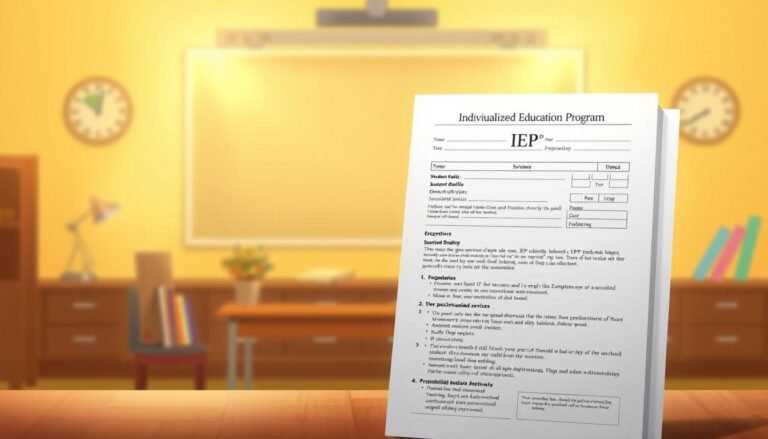
From Frustration to Success: Managing Behavioral Problems in Children with Learning Disabilities
Introduction
Raising a child with learning disabilities presents unique challenges, often leading to moments of frustration for both children and their caregivers. The path from frustration to success is filled with trials, but understanding behavioral issues is key to unlocking potential and fostering a nurturing environment conducive to learning and growth. This article explores strategies for managing behavioral problems in children with learning disabilities, providing insights and practical advice applicable in real-world scenarios.
Understanding Learning Disabilities and Behavioral Problems
What Are Learning Disabilities?
Learning disabilities are neurological conditions that affect how individuals process information. Children with learning disabilities may struggle with reading, writing, math, or processing verbal and non-verbal cues. These challenges can lead to academic difficulties, impacting their self-esteem and resulting in behavioral problems such as frustration, anger, or withdrawal.
The Link Between Learning Disabilities and Behavior
Children with learning disabilities often experience heightened emotions due to their struggles. They may act out in class or at home, leading to behavioral issues. Understanding the root causes of these reactions is essential for effective management. By addressing the learning disabilities’ impact on emotions and behavior, caregivers can create supportive environments that promote success.
Case Study: Emily’s Story
Emily, a 10-year-old with dyslexia, often became frustrated during reading lessons, resulting in disruptive behaviors in the classroom. Her teacher noticed that when Emily was given extra time or alternate methods to engage with the material, her behavior improved significantly. This illustrates the importance of understanding the individual needs of children with learning disabilities and tailoring approaches to foster positive behavior.
Strategies for Managing Behavioral Problems
1. Creating a Structured Environment
A structured environment provides children with predictability, which can reduce anxiety and frustration. Establishing daily routines and consistent rules helps children feel secure.
Implementing Structure
- Visual Schedules: Use charts or pictures to outline daily activities, providing clear expectations.
- Consistent Routines: Keep morning and evening routines the same to reduce uncertainty.
Table 1: Example of a Daily Schedule
| Time | Activity |
|---|---|
| 7:00 AM | Wake Up |
| 7:30 AM | Breakfast |
| 8:00 AM | School Preparation |
| 8:30 AM | School |
| 3:00 PM | Homework |
| 5:00 PM | Family Time |
| 6:00 PM | Dinner |
| 7:00 PM | Reading Time |
2. Positive Reinforcement
Using positive reinforcement encourages good behavior by rewarding children for their efforts and achievements.
Tips for Effective Reinforcement
- Immediate Rewards: Reinforce desired behaviors promptly, whether it’s verbal praise, stickers, or extra playtime.
- Set Achievable Goals: Break tasks into smaller, manageable goals to reduce frustration and enhance motivation.
3. Teaching Emotional Regulation
Children with learning disabilities often struggle to manage their emotions. Teaching coping strategies can help them navigate their feelings more effectively.
Techniques for Emotional Regulation
- Mindfulness Practices: Encourage mindfulness exercises such as deep breathing or guided imagery to help them calm down.
- Emotion Chart: Use emotion charts to help children identify and express their feelings appropriately.
Case Study: Jacob’s Journey
Jacob, 8 years old, frequently experienced outbursts during math lessons, stemming from frustration with complex tasks. His therapist introduced mindfulness exercises that he practiced daily, significantly reducing the frequency and intensity of his episodes. This case highlights the importance of integrating emotional regulation into the management of behavioral problems.
Collaborating with Educators and Therapists
Open Lines of Communication
Collaboration between parents and educators is vital. Regular communication allows for adjustments in teaching strategies that cater to the child’s learning needs.
Key Points for Collaboration
- Regular Meetings: Hold frequent meetings with teachers to discuss progress and challenges.
- Share Strategies: Exchange successful techniques used at home and school.
4. Individualized Education Plans (IEPs)
For children with diagnosed learning disabilities, an IEP is essential. It outlines specific goals tailored to the child’s needs and includes accommodations to support their learning.
Components of an IEP
- Individual Goals: Set achievable milestones.
- Required Accommodations: Identify necessary accommodations, such as extra time on tests or specialized tutoring.
Involving Family and Support Systems
5. Creating a Supportive Home Environment
A supportive home environment reinforces strategies learned at school and helps children thrive. Family involvement is critical in facilitating success.
Family Engagement Techniques
- Supportive Listening: Encourage open dialogues where children can express their feelings and frustrations.
- Family Activities: Engage in activities that promote teamwork and understanding among family members.
Case Study: The Lopez Family
The Lopez family faced significant challenges with their son, Alex, who has ADHD and dyslexia. The family decided to participate in a learning support group. Through shared experiences, they learned strategies that helped reduce behavioral issues at home and school. This emphasizes the importance of community support in managing behavioral problems.
Practical Tools and Resources
6. Utilizing Technology
Various apps and tools can assist in managing learning disabilities and the associated behavioral challenges.
Recommended Tools
- Educational Apps: Use apps that provide customized learning experiences. Tools like “ABCmouse” or “Khan Academy” can make learning engaging.
- Mindfulness Apps: Apps like “Calm” or “Headspace” offer resources for teaching mindfulness techniques to children.
Chart 1: Comparison of Popular Educational Apps
| App Name | Purpose | Age Range | Notable Features |
|---|---|---|---|
| ABCmouse | Comprehensive learning | 2-8 years | Interactive games, varied subjects |
| Khan Academy | Academic support | All ages | Personalized learning dashboard |
| ClassDojo | Classroom management | 5-14 years | Behavior tracking, communication with parents |
7. Addressing Specific Behavioral Challenges
Identifying particular behavioral challenges is crucial in developing targeted strategies. Common problems include aggression, withdrawal, and defiance.
Approaches to Tackle Common Issues
- Aggression: Implement time-out strategies and teach coping mechanisms.
- Withdrawal: Encourage social skills development through group activities.
- Defiance: Offer choices to foster a sense of control and ownership.
Case Study: Sarah’s Transformation
Sarah, a 12-year-old with ADHD, often displayed aggressive behavior when faced with academic challenges. By collaborating with therapists, her parents developed a tailored approach focusing on positive reinforcement and proactive communication. Over time, Sarah learned to express her frustrations in healthier ways, demonstrating the potential for transformation when effective strategies are employed.
Conclusion
Managing behavioral problems in children with learning disabilities is a journey marked by trials and triumphs. The path from frustration to success involves understanding the intricacies of learning differences and adopting tailored strategies that foster an environment of success. By encouraging emotional regulation, creating structured routines, utilizing technology, and engaging with educators and support systems, caregivers can help unlock each child’s unique potential.
As we strive for success, it is essential to remember that patience, understanding, and consistent effort pave the way for positive change. Every small victory represents progress on this journey.
FAQs
1. What are the most common types of learning disabilities?
Common types of learning disabilities include dyslexia (reading difficulties), dyscalculia (math difficulties), and dysgraphia (writing difficulties), among others. Each presents unique challenges that can impact behavior.
2. How can I identify if my child has a learning disability?
Signs may include difficulty with specific subjects, inconsistent performance, trouble following directions, and frustration or avoidance of schoolwork. Consulting a professional for a proper assessment is crucial.
3. Are behavioral problems common in children with learning disabilities?
Yes, behavioral problems are common due to frustration and feelings of inadequacy stemming from learning difficulties. Addressing the root causes can lead to improved behavior.
4. How can technology help in managing learning disabilities?
Technology can provide interactive learning experiences and support emotional regulation through mindfulness apps. Utilizing digital tools can enhance engagement and offer personalized learning paths.
5. What role do parents play in managing their child’s learning disability?
Parents play a crucial role by collaborating with educators, reinforcing learning at home, providing emotional support, and advocating for their child’s needs.
By understanding the complexities of managing behavioral problems in children with learning disabilities, we can transform frustration into a pathway toward success, empowering each child with the tools they need to thrive.
















